This article needs additional citations for verification .(October 2023) |
A summary of 1821 in birding and ornithology.
This article needs additional citations for verification .(October 2023) |
A summary of 1821 in birding and ornithology.
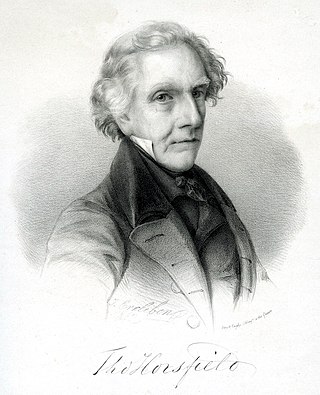
Thomas Horsfield was an American physician and naturalist who worked extensively in Indonesia, describing numerous species of plants and animals from the region. He was later a curator of the East India Company Museum in London.

The Naturmuseum Senckenberg (SMF) is a museum of natural history, located in Frankfurt am Main. It is the second-largest of its kind in Germany. In 2010, almost 517,000 people visited the museum, which is owned by the Senckenberg Nature Research Society. Senckenberg's slogan is "world of biodiversity". As of 2019, the museum exhibits 18 reconstructed dinosaurs.

The white-throated toucan is a near-passerine bird in the family Ramphastidae found in South America throughout the Amazon Basin including the adjacent Tocantins and Araguaia River drainage. It prefers tropical humid forest, but also occurs in woodland and locally in riverine forest within cerrado.

The black-faced monarch is a passerine songbird in the family Monarchidae found along the eastern seaboard of Australia, and also New Guinea.

The singing bush lark or Horsfield's bush lark is a species of lark which inhabits grassland throughout most of Australia and much of Southeast Asia. It was described by the American naturalist Thomas Horsfield.
Alfred Duvaucel was a French naturalist and explorer. He was the stepson of Georges Cuvier and travelled in India and Southeast Asia as a collector of specimens for the Museum of Natural History in Paris.

The blue-eared kingfisher is found in Asia, ranging across the Indian subcontinent and Southeast Asia. It is found mainly in dense shaded forests where it hunts in small streams. It is darker crowned, with darker rufous underparts and lacking the rufous ear stripe of the common kingfisher which is found in more open habitats. A number of subspecies have been described that differ in measurement and colour shade. Adult males have an all dark bill while females have a reddish lower mandible.

The Chinese sparrowhawk (Tachyspiza soloensis) is a bird of prey in the family Accipitridae. This species was formerly placed in the genus Accipiter.
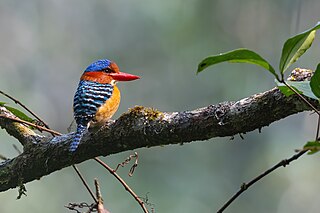
The banded kingfisher is a tree kingfisher found in lowland tropical forests of southeast Asia. It is the only member of the genus Lacedo. Male and female adults are very different in plumage. The male has a bright blue crown with black and blue banding on the back. The female has rufous and black banding on the head and upperparts.

The grey-breasted partridge, also known as the white-faced hill partridge, or Horsfield's hill partridge, is a bird species in the family Phasianidae.
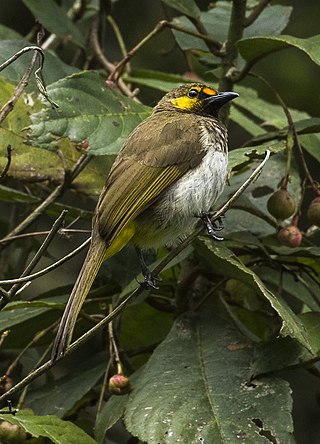
The orange-spotted bulbul is a species of songbird in the bulbul family of passerine birds. It is endemic to Java, Bali and Sumatra.

The Javan shortwing is a species of bird that is placed in the Old World flycatcher family Muscicapidae. It is endemic to the island of Java where it favours montane forests.

The Oriental cuckooshrike is a species of bird in the family Campephagidae. It is widely distributed from the Himalayas through Southeast Asia to east China and Taiwan. It is also found on the islands of Java and Bali in Indonesia. Its natural habitat is subtropical or tropical moist lowland forest. The range of this species was formerly restricted to Java and Bali and had the English name "Javan cuckooshrike".
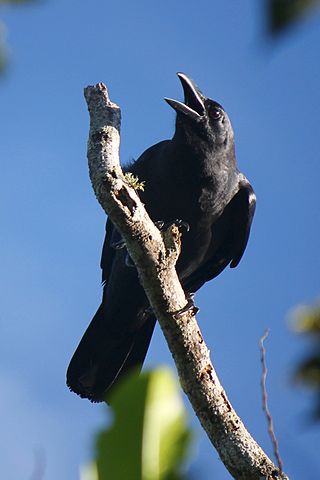
The Sunda crow, formerly known as the slender-billed crow, is a passerine bird of the family Corvidae, in the genus Corvus. It is found from Malaysia to Borneo. The violet crow has been shown to be distinct genetically and separated as Corvus violaceus. The small crow has been split as Corvus samarensis and the Palawan crow has also been split as Corvus pusillus.

The banded broadbill is a species of bird in the Eurylaimidae typical broadbill family found in Mainland Southeast Asia and the Greater Sunda Islands. It is sometimes split into two species, one including only the nominate subspecies, E. j. javanicus, and one including all the remaining subspecies. It inhabits a variety of forests, along with forest edge, rubber plantations and Falcataria falcata groves, mainly in lowland areas. A striking, large-bodied bird with a length of 21.5–23.0 cm (8.5–9.1 in), it is unlikely to be mistaken for another species. The broadbill is mostly purplish-red, with yellow-streaked black wings, a bright blue beak, a blackish face and greyish chin and upper breast. Females can be told apart from males by their lack of a black neckband, although these are indistinct in Bornean and Javan males. Despite its conspicuous appearance, the bird is usually hard to see due to its sluggishness and is usually only noticed when it vocalises.

The grey-and-buff woodpecker is a species of bird in the family Picidae. It is found in Brunei, Indonesia, Malaysia, southern Myanmar, and southern Thailand, but has become regionally extinct in Singapore. Its natural habitats are lowland and montane tropical or subtropical moist broadleaf forests.
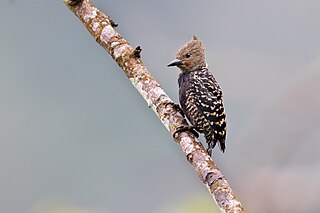
The zebra woodpecker is a species of bird in the family Picidae. It is found in Java. Its natural habitats are subtropical or tropical dry forests and subtropical or tropical moist lowland forests.
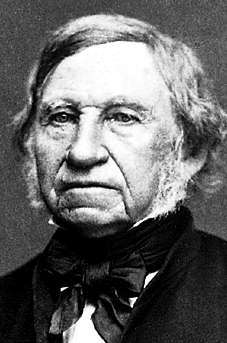
Sven Nilsson was a Swedish zoologist and archaeologist.
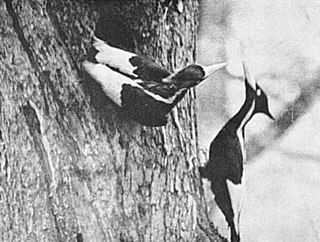
The ivory-billed woodpecker is a woodpecker native to the bottomland hardwood forests and temperate coniferous forests of the Southern United States and Cuba. Habitat destruction and hunting have reduced populations severely, such that the last universally accepted sighting in the United States was in 1944, and the last universally accepted sighting in Cuba was in 1987. Sporadic reports of the persistence of the species since these dates are controversial, and most sources agree that it is likely extinct.
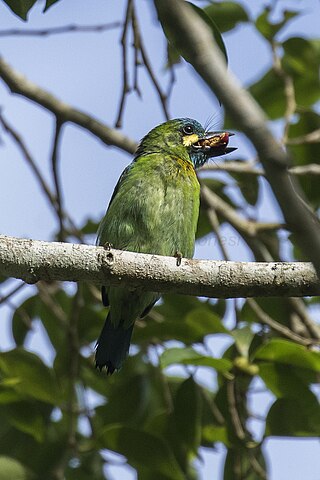
The yellow-eared barbet is an Asian barbet native to Java and Bali. It inhabits shrubland and forest up to an altitude of 2,000 m (6,600 ft).